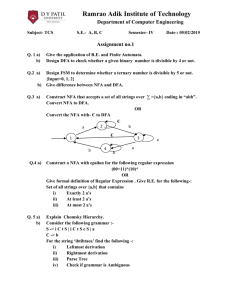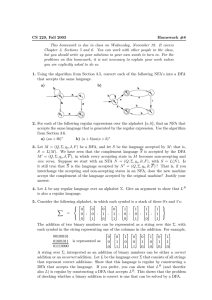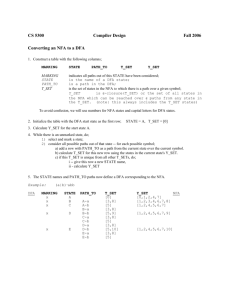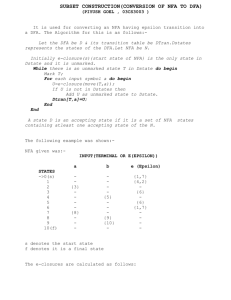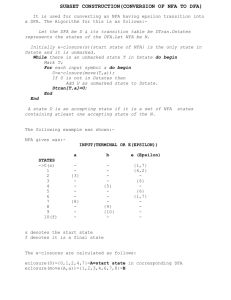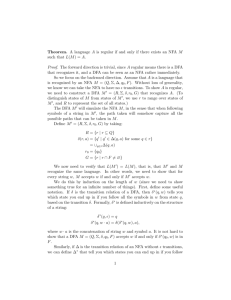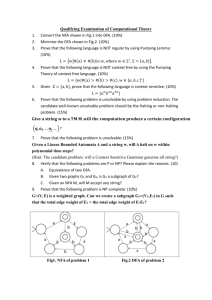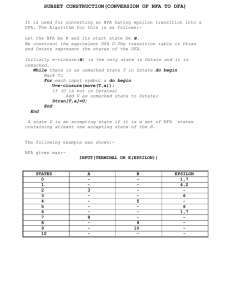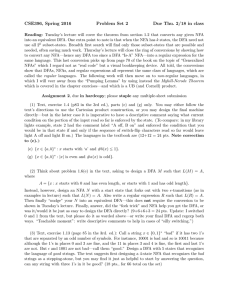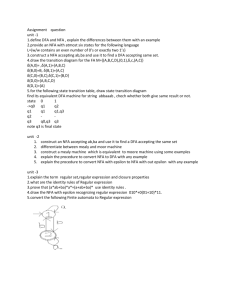COT 4210 (Proof) Homework #1: Regular Languages Due Date
advertisement
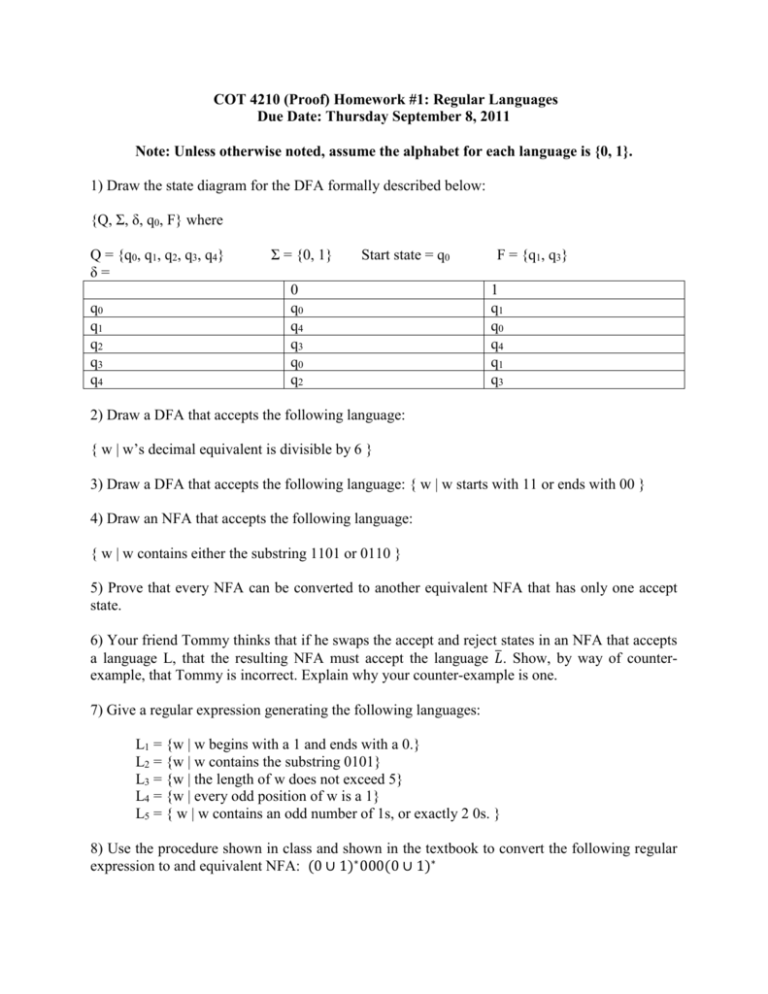
COT 4210 (Proof) Homework #1: Regular Languages
Due Date: Thursday September 8, 2011
Note: Unless otherwise noted, assume the alphabet for each language is {0, 1}.
1) Draw the state diagram for the DFA formally described below:
{Q, Σ, δ, q0, F} where
Q = {q0, q1, q2, q3, q4}
δ=
q0
q1
q2
q3
q4
Σ = {0, 1}
Start state = q0
0
q0
q4
q3
q0
q2
F = {q1, q3}
1
q1
q0
q4
q1
q3
2) Draw a DFA that accepts the following language:
{ w | w’s decimal equivalent is divisible by 6 }
3) Draw a DFA that accepts the following language: { w | w starts with 11 or ends with 00 }
4) Draw an NFA that accepts the following language:
{ w | w contains either the substring 1101 or 0110 }
5) Prove that every NFA can be converted to another equivalent NFA that has only one accept
state.
6) Your friend Tommy thinks that if he swaps the accept and reject states in an NFA that accepts
a language L, that the resulting NFA must accept the language 𝐿̅. Show, by way of counterexample, that Tommy is incorrect. Explain why your counter-example is one.
7) Give a regular expression generating the following languages:
L1 = {w | w begins with a 1 and ends with a 0.}
L2 = {w | w contains the substring 0101}
L3 = {w | the length of w does not exceed 5}
L4 = {w | every odd position of w is a 1}
L5 = { w | w contains an odd number of 1s, or exactly 2 0s. }
8) Use the procedure shown in class and shown in the textbook to convert the following regular
expression to and equivalent NFA: (0 ∪ 1)∗ 000(0 ∪ 1)∗
9) Use the algorithm described in class to convert a DFA to a regular expression on the DFA
described below:
DFA D2: Q = {1, 2, 3}, Σ = {a, b}, F = {1, 3}, 1 is the start state, and δ is described as follows:
Σ
a
b
a
b
a
b
Q
1
1
2
2
3
3
Q
3
2
2
1
1
3
10) Prove that the following languages are nor regular via the Pumping Lemma:
L1: {0n12n | n ≥ 0}
L2: {ww | 𝑤 ∈ Σ ∗ }
𝑛
L3: {02 | 𝑛 ≥ 0}
11) Determine a DFA with the minimum number of states that is equivalent to the DFA
described below:
DFA D: Q = {0, 1, 2, 3, 4, 5, 6}, Σ = {a, b}, F = {1,3,5,6}, 0 is the start state, and δ is described
as follows:
Q
0
0
1
1
2
2
3
3
4
4
5
5
6
6
Σ
a
b
a
b
a
b
a
b
a
b
a
b
a
b
Please use the algorithm shown in class.
Q
1
3
2
4
5
5
4
2
5
5
6
5
6
6


